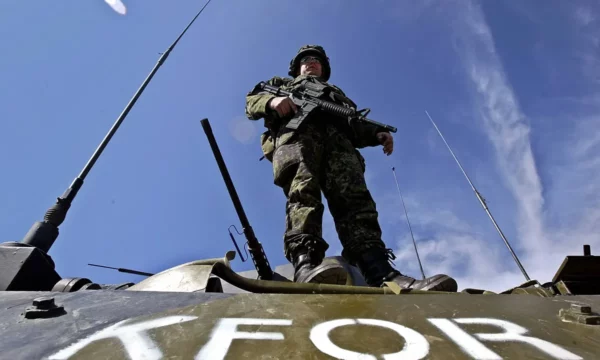Bloomberg has suggested that the U.S.-brokered Gaza peace plan, led by President Donald Trump, could only work if it draws lessons from Kosovo’s KFOR mission—one of the most successful peacekeeping operations in modern history.
The outlet begins its analysis by questioning why the 20-point peace agreement, signed around ten days ago, already appears to be in trouble. According to Bloomberg columnist Michael Champion, the key missing component is a strong, credible peacekeeping force capable of enforcing the ceasefire on the ground.
“Without an effective peacekeeping presence, halting the fighting in Gaza will be extremely difficult,” the article notes, adding that “a model to look at is Kosovo, where NATO’s KFOR has successfully maintained peace for decades.”
Why the Gaza Truce Is Failing
Instead of preparing for disarmament and political withdrawal, Hamas militants have reportedly resurfaced from hiding to target rival Palestinian groups and reassert control in areas vacated by Israeli troops.
Meanwhile, Israel accuses Hamas of ambushing its forces, while Hamas claims Israel continues to bomb Gaza from the air. Both claims appear to hold truth, Bloomberg writes, noting that Israel’s IDF is still refusing to reopen the Rafah crossing with Egypt, as stipulated in the deal.
Champion argues that the rapid breakdown of the truce stems from the fact that neither Hamas nor Israel were genuinely satisfied with the deal—having signed it under heavy U.S. and regional pressure.
“As both sides made it clear from the start they did not intend to fully implement the agreement’s key terms, asking ‘Why are they misbehaving?’ might be the wrong question,” the author adds.
“A better one might be: ‘How are they able to get away with it?’”
KFOR as a Blueprint for Gaza
Bloomberg suggests that the Kosovo Force (KFOR)—established in 1999 after NATO’s 78-day bombing campaign against Serbia—provides the best model for a future Gaza peacekeeping mission.
The Trump peace plan’s 20-point structure, according to the report, was partially based on a proposal by former UK Prime Minister Tony Blair, who had experience in designing the Kosovo stabilization framework.
“In Kosovo, NATO troops filled the post-war security vacuum immediately,” Bloomberg notes. “In Gaza, the peace element of Trump’s plan is still being negotiated in Cairo.”
A UN-Backed, Muslim-Led Force for Gaza
The article proposes a UN-sanctioned multinational force, led primarily by Muslim-majority nations such as Egypt, Azerbaijan, and Indonesia, as the most credible peacekeeping model for Gaza.
While acknowledging that KFOR was not perfect, Bloomberg emphasizes that its longevity—still operating 25 years later—demonstrates its effectiveness.
“The lesson from KFOR is clear: without immediate preparation to fill the security vacuum, no peace agreement can survive,” the article concludes.
“For Gaza, that means starting with Rafah—even if the plan must be implemented gradually.”







